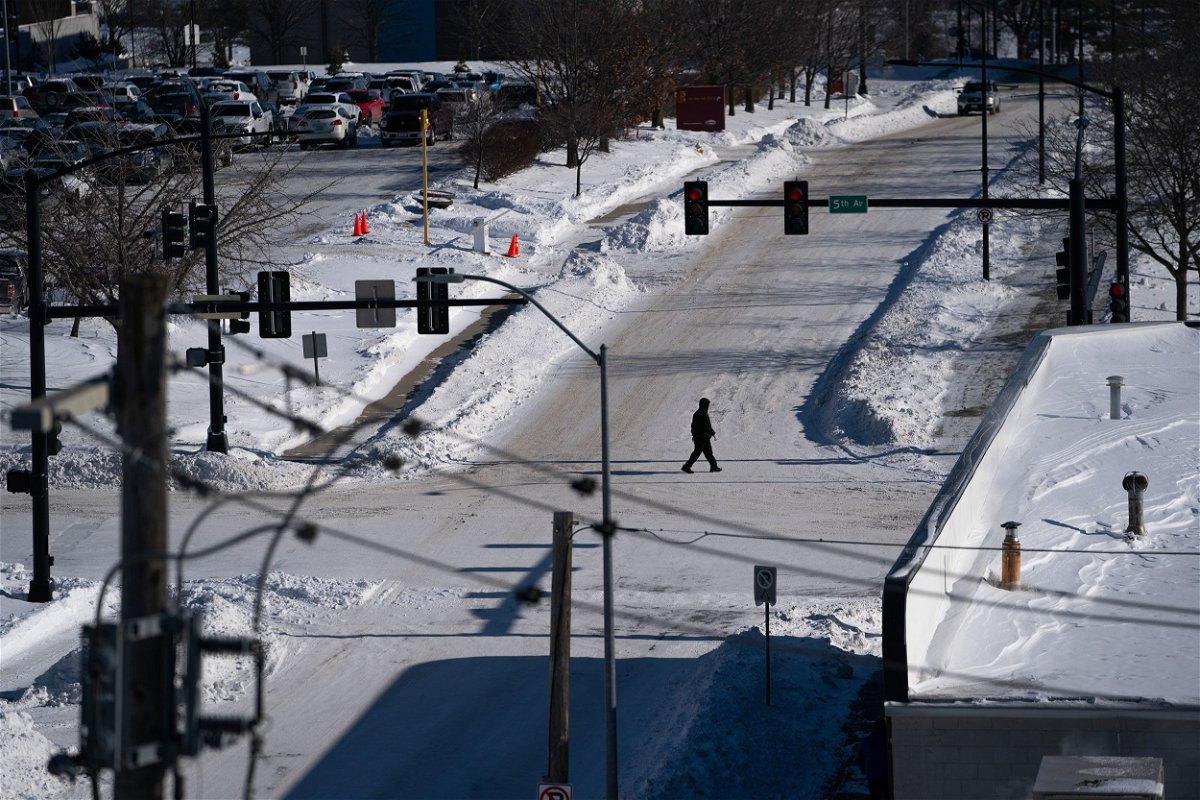What does hypothermia look and feel like? Emergency room doctors break down the signs

A series of winter storms have killed several people across the United States while putting millions at risk of dangerous conditions like hypothermia.
(CNN) — Brutally cold weather is affecting large swaths of the United States, with about 80% of the population experiencing temperatures below freezing.
The Arctic blast has caused dozens of deaths in several states.
Cases of a dangerous condition called hypothermia are also rampant. In the Midwest, the Kansas City Fire Department says it treated dozens of spectators for symptoms of hypothermia during a matchup between the Kansas City Chiefs and the Miami Dolphins last weekend. It was the fourth-coldest game in NFL history.
Although it may be most commonly associated with frigid temperatures, experts note that hypothermia can also happen at temperatures above 40 degrees Fahrenheit if a person becomes chilled from rain, sweat or being submerged in cold water.
“How fast you get cold depends on what temperature it is, but it can also happen pretty quickly,” said Dr. Emily MacNeill, an emergency medicine physician at Atrium Health Levine Children’s Hospital in Charlotte, North Carolina.
Symptoms may range from mild to severe, so it’s important to know what hypothermia looks and feels like to avoid serious complications.
What hypothermia does to your body
Hypothermia occurs when the body loses heat faster than it can be produced, using up all of the energy the body has stored to keep itself warm.
A normal body temperature is typically around 98.6 degrees Fahrenheit, according to the US Centers for Disease Control and Prevention. Symptoms begin when the core body temperature dips below 95 degrees.
This dysregulation makes it difficult for the nervous system, heart and other organs to work properly, says Dr. Evelyn Huang, an emergency medicine physician at Northwestern Memorial Hospital in Chicago.
“With mild hypothermia, you get symptoms that people are more familiar with,” she said. “This includes shivering, feeling a little tired or feeling a little bit of confusion.”
Once a person’s body temperature drops to about 89 to 82 degrees, moderate hypothermia has begun.
“That’s when you see symptoms such as excessive sleepiness,” Huang said. “Your heart rate may start to go down, and you may even stop shivering.”
Severe hypothermia begins when the core body temperature is 82 degrees or lower, according to Huang. Symptoms include bluish skin, dilated pupils, slowed pulse and breathing, low blood pressure and loss of consciousness.
In severe cases, a person’s heart can stop beating, and they may require CPR. At this point, Huang says, they should be taken to a hospital as soon as possible.
When to go to the hospital
Mild hypothermia typically does not require a hospital visit and can be reversed by resting in a warm place, removing any wet clothing and covering yourself with a warm blanket, Huang says.
“If you are outside and you’re like, ‘Hey, it’s really cold, and I’m shivering a little,’ and you go inside and you’re feeling completely back to normal, you don’t need to go to the hospital,” she said.
However, if you have confusion or trouble walking or feel like you’re not yourself, you should go to the hospital or call 911, Huang advises.
If you can’t get to a hospital right away, find a warm room or shelter and remove any wet clothing, the CDC says. Warm the center of the body first — chest, neck and head — with skin-to-skin contact, if possible, under loose, dry layers. Warm beverages can also help raise body temperature.
In-hospital treatment
At the hospital, treatment for hypothermia can vary depending on the person’s core temperature, according to Huang. Getting them into dry clothes is typically the first step.
“Oftentimes, people will be in very wet clothes,” Huang said. “Then you want to warm the core of the person.”
Hospital staffers use warming blankets — large pads filled with warm air that expands over the person — as well as warm fluids delivered intravenously.
More invasive procedures can be done in severe cases, MacNeill says.
“The best thing to do is put them on extracorporeal membrane oxygenation, which is where you bypass their circulation and you circulate the blood through a warming machine to warm the core temperature up,” she said.
Long-term consequences
The most severe consequence of hypothermia is death, MacNeill and Huang say, typically due to heart failure.
“You can certainly die from hypothermia because we can’t get you rewarmed,” MacNeill said. “Your heart rate gets really slow or your heart stops because it’s just too cold to function.”
For this reason, people with a diagnosed heart condition should stay inside when it’s very cold, Huang adds.
“If somebody has a heart that is not as healthy as a healthy heart, they are more susceptible to [injury], whether that be extreme heat or extreme cold,” she said. “They don’t have as much reserve to deal with extremes.”
Severe hypothermia can also damage the liver and the kidneys, according to MacNeill.
“The kidneys are pretty hard-hit by hypothermia. And that’s because the blood vessels constrict down to try to keep all the blood flow central,” MacNeill said. “When blood flow constricts to the kidneys, that can be hard on them.”
Some are at higher risk
Infants and older adults are at an increased risk of hypothermia, experts say, because they have a harder time maintaining their core body temperatures and tend to make less body heat.
Older adults with dementia or Alzheimer’s disease are especially susceptible to moderate to severe hypothermia because they may not be able to assess whether they feel sick or need medical attention.
About 1 in 4 people who have dementia live alone, according to the CDC. If you have friends or neighbors older than 65, check on them frequently when it’s cold to ensure that their homes are adequately heated — between 68 and 70 degrees.
Similarly, it’s difficult to diagnose small children with hypothermia, MacNeill says, because they may not be able to speak up for themselves.
“They don’t know what’s dangerous, and they don’t know how to assess risk very well,” she said. “It takes a lot of cognitive development to get to that space.”
Taking precautions
The risk of hypothermia goes up once the temperature inside a home drops below 50 degrees for a prolonged period of time, experts say, so it’s important to keep your home as warm as possible.
Never use generators, gas or charcoal grills or wood stoves inside your home, the CDC notes. The fumes from these devices can cause carbon monoxide to build up, and the odorless, colorless gas can kill you.
When going outdoors, dress in warm, dry layers, with a special emphasis on protecting your ears, nose, cheeks, toes and fingers to avoid hypothermia as well as frostbite. This condition may develop when your blood vessels narrow, skin temperature drops and ice crystals form around and within your cells, causing damage.
Frostbite symptoms include white or grayish-yellow skin that feels unusually firm and numbness in the affected area.
If you or someone you know develops frostbite and immediate medical care isn’t available, the CDC recommends getting into a warm room as soon as possible and immersing the area in warm – not hot – water. You can also warm the area using body heat.
The-CNN-Wire
™ & © 2024 Cable News Network, Inc., a Warner Bros. Discovery Company. All rights reserved.



